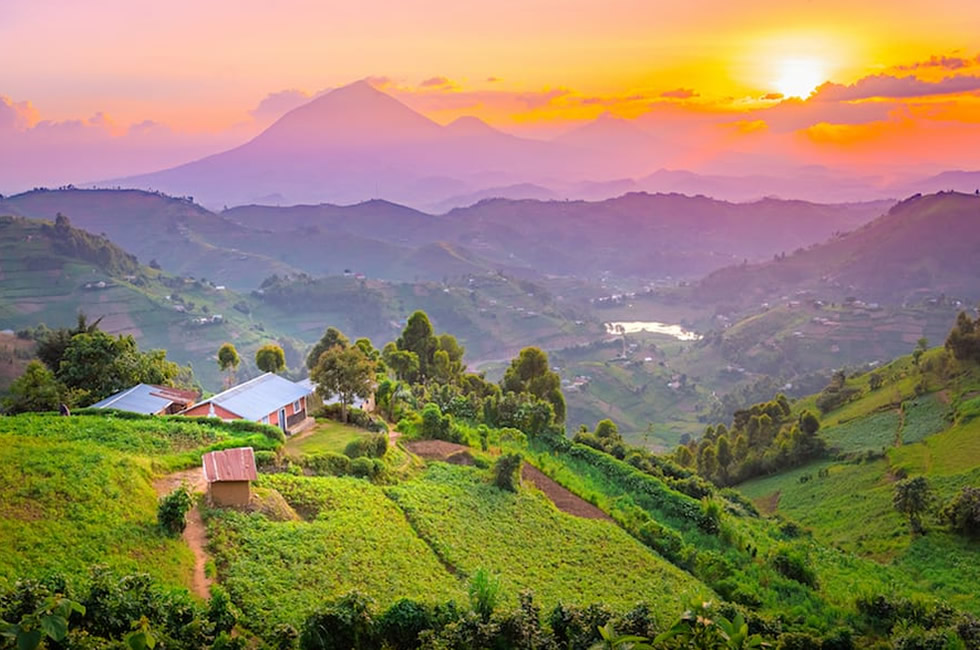The British Prime Minister Winston Churchill stated that Uganda was the “pearl of Africa” because of its magnificence, variety of forms and colors, and abundance of vivid life, flora, and animals. East Africa’s smaller interior covers an area of 241,038 sq km. Uganda is located in eastern Africa, bordered to the east by Kenya, to the south by Tanzania and Rwanda, to the west by the Democratic Republic of the Congo, and to the north by South Sudan.
With its abundant natural resources, this nation stands out as the gem of Africa. Consider Uganda to be the concentrated version of Africa because it contains almost all of the continent’s possessions. In the world of travel (tourism), Uganda offers a ton of deals for adventure seekers, is renowned for its friendly people, and has an erratic, stunning topography with fertile soils and a climate that encourages the growth of a wide variety of foods, making Uganda a food basket.
What Makes Uganda a Pearl of Africa?
Topography of the Pearl of Africa
Undoubtedly, Uganda has the nicest landscape in the world. It varies from region to region and ranges from flat plateaus to rolling mountains, yet the Pearl of Africa’s most prominent feature is relatively level terrain. Uganda has a tropical environment that has been ranked among the best in the world, with a lot of greenery and gorgeous savannah that can be seen all around the nation.
The country’s undulating geography provides amazing hiking opportunities. These include walking the Elgon Mountains in eastern Uganda, the world’s largest caldera, as well as the Moon of the Albertine Rift Valley, Africa’s third-highest mountain. Yes, exactly. There is a lot to discover, along with numerous and diverse topographies, which contribute to Uganda’s reputation as the Pearl of Africa. The Ugandan landscapes are the product of a variety of geological eruptions, including volcanic, folding, and down warping.
Wildlife in the Pearl of Africa
Uganda is known as the Pearl of Africa because of its exceptional flora and biodiversity. Nearly everything that is dispersed across the African continent is packed into the narrow interior of eastern Africa. Uganda is endowed with a wide variety of wildlife species, most of which can be found in protected areas. Indicate your preferences for your Uganda safari: The Pearl of Africa can recommend activities such as tracking chimpanzees, game viewing, and birding excursions, among many more.
Uganda is home to a variety of wildlife species, including more than 1000 different tree species, half of the world’s mountain gorilla population, over 5000 chimpanzees, about 20 different primate species, the Big Five, towers of giraffe, over 1500 different bird species, cheetahs, wild dogs, schools of hippopotamuses, and numerous aquatic species, to name a few. The same species of wildlife can be seen in 10 well-known Uganda national parks on the desired encounters.
Water bodies
The source of the world’s longest river, which stretches from Uganda to as far as the Red Sea, the remarkable Nile River, along with its marvelous features, has facilitated the formation of several tourist engagements. On the Nile River are the world’s most powerful waterfalls, the Murchison Falls and the Itanda Falls, for remarkable white-water rafting. The pearl of Africa has a lot to offer in terms of rivers and waterfalls, with the most impressive being the Sipi Falls at the foothills of Mountain Elgon and many more.
Relating to the topography, many depressions countrywide lead to the formation of countless lakes. Uganda harbors the largest portion of Africa’s largest lake, Lake Victoria, and the world’s second-largest freshwater lake, which is also the source of the world’s longest river, the Nile. With many lakes on the list for travelers, the fantastic Lake Bunyonyi is Africa’s second-deepest lake and an amazing tourist destination for a silent minute of travelers.
In 2019, Rough Guide, the UK-based traveler’s guide, ranked Uganda among the best 15 tourist destinations to visit. The popular Murchison Fall National Park was marked as outstanding among other destinations due to the variety of wildlife and the arguably world’s most powerful waterfall, the Murchison Falls.
People in the Pearl of Africa
Uganda is one of the nations with the greatest diversity of ethnic groupings worldwide. Uganda is the fourth-most culturally diverse nation, according to the World Atlas (2014). Uganda’s culture is a gem, with a wide variety of still-rudimentary traditional customs. Political turmoil was a defining feature of Uganda’s past. They are lively individuals who welcome anybody who comes across them; they are not chaotic, though. The best English-speaking nation in Africa is considered to be Uganda. There are several native English speakers throughout the nation for English speakers to run into.
There are more than 50 tribes in Uganda, each with its own set of traditions and customs, and ethnicity still refers to it as the Pearl of Africa. The diverse culture on display for tourists offers a lot to discover, and one method to conserve certain cultural activities is through commercialization.
Sand beaches
On Lake Victoria, Africa’s largest freshwater lake, are the sand beaches, with a variety of water experiences offered. Ssesse Island in Kalangala district is one of the most fantastic beach spots for all your desired sand beach encounters, though it is also along the shores of Lake Entebbe, which is the major spot encompassed with the coolest ambiance. The most striking is the Botanical Gardens in Entebbe.
Equator crossing
Uganda is undeniably the Pearl of Africa, where one has the opportunity to have both legs stepping in the two global hemispheres at the same time. Uganda has three equator crossing points, with Kayabwe equator being the most noticeable one along Kampala Masaka Road; the other equator point is found in Queen Elizabeth National Park and Ssesse Island.
